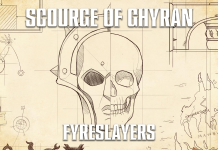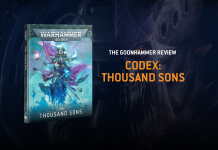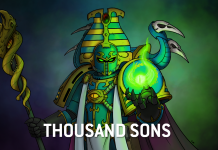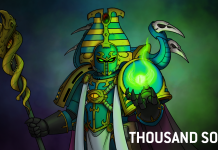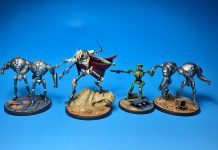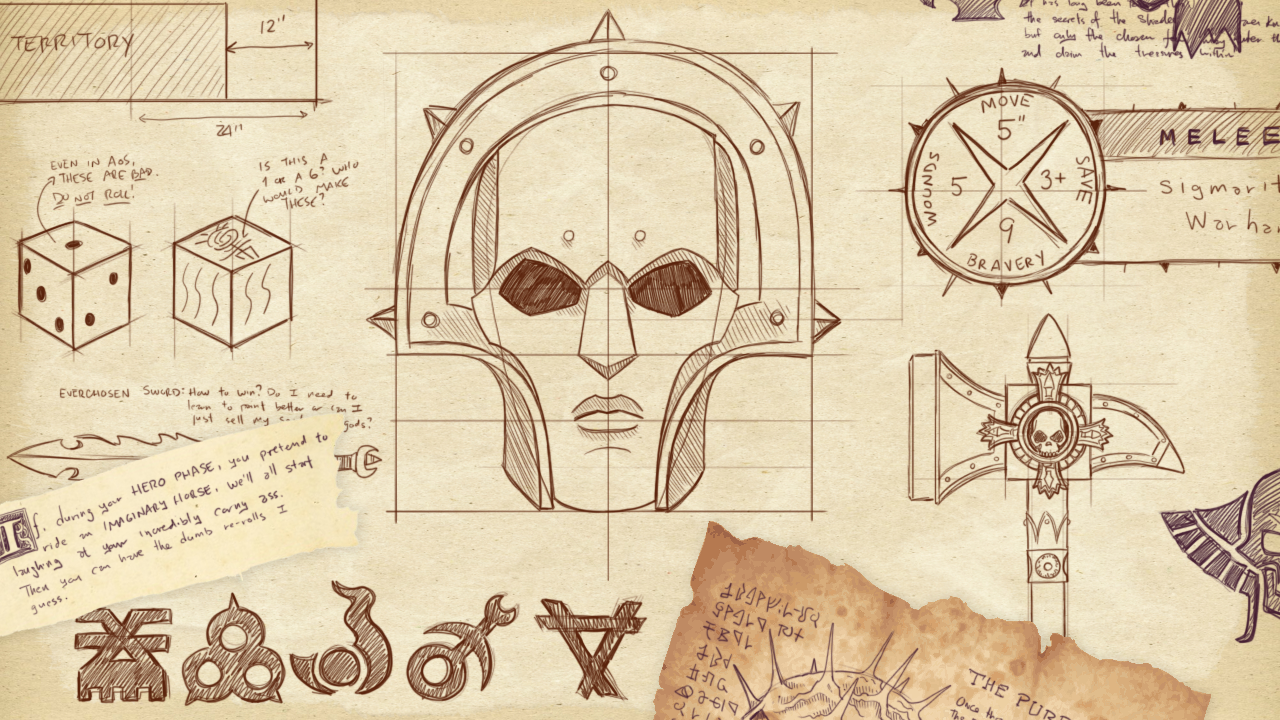When was the last time you saw a Warhammer Underworlds warband on the tabletop? Taking a wild stab in the dark here, we don’t think it’s been a while. This is a shame, as the Underworlds warbands have some of the most characterful, dynamic, and allround beautiful models in the Age of Sigmar range. There’s a common perception that the warbands just aren’t that good, and should never see the tabletop; in this series our goal is to change that perception by looking at every warband in the game with a bit more depth. In the first article in this series we’re starting with the warbands in Season One: Shadespire.
Before we begin
Let’s address a few things before we get started, and lay some ground rules for how we’ll be evaluating these warbands.
Common warband traits
There are a few things that are pretty much common to every one of the Underworlds warbands:
- Competitive viability: We’ll come right out and say it; you won’t see most warbands at the top tables of tournament games because there are usually just better options in the book. This doesn’t necessarily mean the warband is bad, just not the best. Don’t hold this against them; most warbands are still pretty decent and fun to use, and worst-case, the models are still lovely.
- Faction locked: Most warbands are tied to specific sub-factions which can limit your options; want to use Ironskull’s Boyz in a Bloodtoofs army? You can, but they won’t benefit from any of the Bloodtoofs special rules. We haven’t seen units that break allegiance abilities like in 40k yet, so this isn’t a huge drawback, but it is something to be aware of.
- No choices: No equipment options here!
- Weird points: Games Workshop appears to think that because the warband is unique, it should be priced higher. The worst offender in Season One is probably the Farstriders or Chosen axes, but it’s a consistent issue throughout.
- Non-standard rules: Just because you’ve been using a Greatblade in your army for years, don’t expect a warband with a Greatblade to use the same rules for one. Why? Nagash only knows.
- Confusing profiles: These warbands were all modelled for Underworlds, where each model can have meaningfully unique rules without messing up the balance of the game. In Age of Sigmar, you end up with warbands having far too many weapon profiles with almost identical numbers across them. This can be pretty confusing and exceptionally annoying. The worst offender in Shadespire is the Sepulchral Guard, which as seven models with six different equipment profiles…
- Strange composition: Underworlds Warbands often comprise of a hero accompanied by a few models from a different unit. This can make comparisons difficult sometimes, but it gets much worse in later seasons where you could have a hero accompanied by a single model from three or four different units.
How we’ll do this
A few notes on what we’ll be looking at as we catalog and evaluate these warbands:
- Faction: What faction, subfaction, and Grand Alliance is the warband from? If the subfaction gives any fun bonuses, we’ll note them here.
- Price: How many points is the warband?
- Source: Where are the warbands rules? Many of these units are in their respective Battletomes now. Where they aren’t we’ll explicitly call this out and provide a link to the most up to date rules.
- What you get: Who’s in the warband, and what are they armed with?
- What we’ll compare it to: What’s the closest generic unit in their faction? What unit should you be thinking about when comparing the two?
- Rules: What rules make them different to their generic version, and are they any good?
- Output: To give an even playing field, I’m going to assume that all units are attacking something with a 5+ save. Where possible, I’ll add conditional bonuses on their warscrolls, but not command abilities or faction rules, otherwise we’ll be here forever!
- Bottom line: I’m not going to be ranking these or giving them a traditional alphabetical score, just a pass/fail. If the unit is fun, interesting, or decent rules wise, it gets a pass. If it’s actively worse than its equivalent unit, it gets a fail. Models from fail units should just be used to count-as models in their parent unit to spice them up aesthetically, while pass units could be fun to use on their own.
The Shadespire Warbands
Steelheart’s Champions
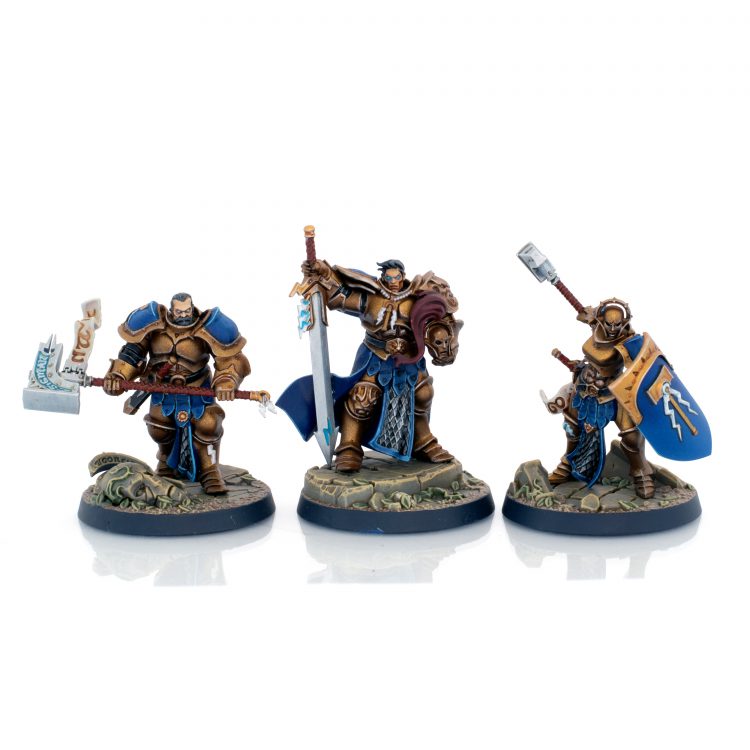
Faction: Hammers of Sigmar Stormcast (Order). Plus one Bravery is… fine, but you’re in such a small unit you won’t be taking battleshock tests, so this is only really useful for attacks that target Bravery.
Price: 100 points
Source: 2018 Stormcast Battletome
What you get: Three Stormcast Liberators; Severin Steelheart wielding a Broadsword, Obryn the Bold with a Grandhammer, and Angharad Brightshield with a Warhammer and Sigmarite shield.
What we’ll compare it to: Five Liberators for 100 points.
Rules: The Champions get to add one to hit to units with a wounds characteristic of 5 or more, and can re-roll save rolls of 1 while Angharad (the shield maiden) lives. The Sigmarite Shields re-roll for saves is pretty tasty when combined with their unique rule, Heroic Guard, which grants plus one to saves when charged.
Offensively, they’re a little better than their Liberator equivalent. Severin Steelheart attacks with a Grandblade equivalent but with the Liberator-Prime’s bonus attack (re-rolling all failed hits if you target a unit with five or more models), Angharad uses a Warhammer but with a bonus attack and a bonus to hit (3+/3+ is always a respectable profile), and Obryn brings it home with a Damage 3 Grandhammer. Attacking a model with five or more wounds does bump the unit’s damage up to four which, you might notice, is less than the five their target has, and will probably be quite angry now you’ve bruised it.
Output: 3 wounds against 5+ save. Not… fantastic. Neither of their buffs nets them another kill either. Comparatively, a basic liberator unit does slightly more damage.
Bottom line: A basic Liberator unit edges them out offensively, and has more wounds at the same profile for the same price. Use the Champions models to spice up your normal Liberator units aesthetically; they’re just mathematically not as good. Fail
Garrek’s Reavers
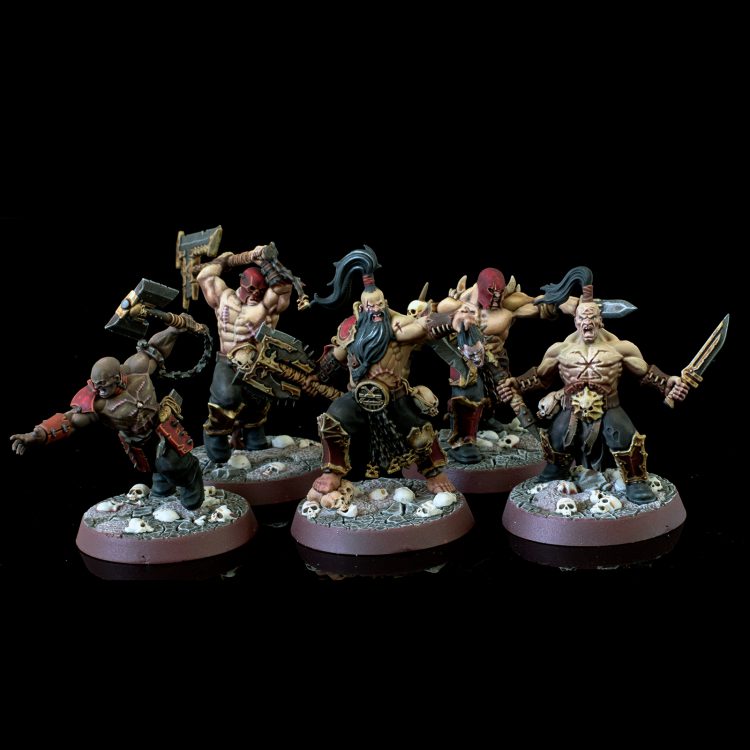
Faction: Goretide Blades of Khorne (Chaos). Re-rolling wound rolls of 1 is always a nice bonus, especially given their already decent output.
Price: 60 points
Source: 2019 Blades of Khorne Battletome
What you get:
What we’ll compare it to: Ten Bloodreavers for 70 points. Comparatively, Garrek’s Reavers have immunity to battleshock if Garrek kills a model, and frankly far too many weapon profiles. You also get an additional bravery, but considering your Bloodreavers’ banner grants this as well, it’s not relevant. They also lose out on the plus 1 to run and charge from a Hornblower, which Garrek doesn’t have (perhaps he hates music).
Rules: The only exciting thing here is Garrek inflicts mortal wounds on a 6 to hit, which is never a bad thing.
As an added bonus, these little Blades of Khorne units are useful little Blood Tithe generators. They kill stuff? Great! They die fast and easy? Great, more summoning power for you. As a sneaky trick, use Blood Sacrifice on this unit and hope they run away to grant you two Blood Tithe!
Output: Every attack from this unit is better than any attack from a standard Bloodreavers unit, either in volume, accuracy, or rend. Because Bloodreavers generally only attack in one rank with their 32mm bases, you’re getting more, and better, attacks on the same frontage than their basic unit version.
Bottom line: This may actually be a good warband! The Reavers do far more damage on the same frontage than their comparable unit, and their size may allow them to slip through gaps that larger units struggle with. Slap them on the table and reap their skulls! Pass
Ironskull’s Boyz
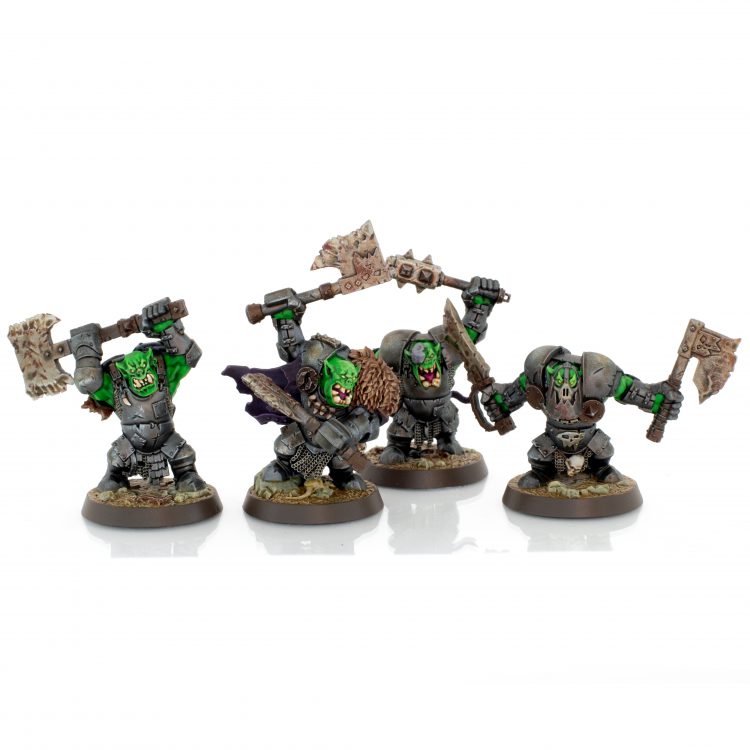
Faction: Ironsunz Orruk Warclans (Destruction). Ironsunz aren’t great, but -1 to be hit during the first battle round is still nifty.
Price: 80 points
Source: 2019 Orruk Warclans Battletome
What you get: Gurzag Ironskull with a Pair of Ardboy Choppas and an ‘Eadbutt, two unnamed Ironskull’s Boyz with a Pair of Ardboy Choppas each, and one more unnamed Boy with an Ardboy Big Choppa. These are living, breathing Orruks, GW! They deserve names!
What we’ll compare it to: Five Orruk Ardboys with Ardboy Choppas for 100 points. The Boys miss out on a Drummer, which is an insanely good plus 2” to charges given both units’ measly 4” movement, and a banner which either adds two (!) bravery to the unit or subtracts one from enemy units within 3”. Both of these command elements are really good, so it’s a bit naff that Ironskull’s Boyz miss out.
Rules: Models with a Pair of Ardboy Choppas add one to hit rolls; why this isn’t just built into the profile is anyone’s guess, but this means your orruks are now generally hitting on twos. The Big Choppa only hits on 4+ but does two damage, while somehow the highest damage attack profile is Gurzag’s headbutt at d3 damage. How thick is your noggin, boyo?!
Speaking of thick skulls, the Boyz are Dead ‘Ard, which gives them a 6+ ignore wound; Gurzag can ignore wounds on a 5+ instead. Combined with the natural 4+ save of Ardboys, this is a tanky little unit.
Output: This is the killiest Warband we’ve yet seen
Bottom line: More damage and more survivability for a cheaper cost than their parent unit, this is a real good pick. The only drawback, and it is a big one, is you lose out on +2” charge from the banner. Orruks are pretty slow, so this isn’t something you can just ignore, but Gurzag gets a very solid Pass from us.
Sepulchral Guard
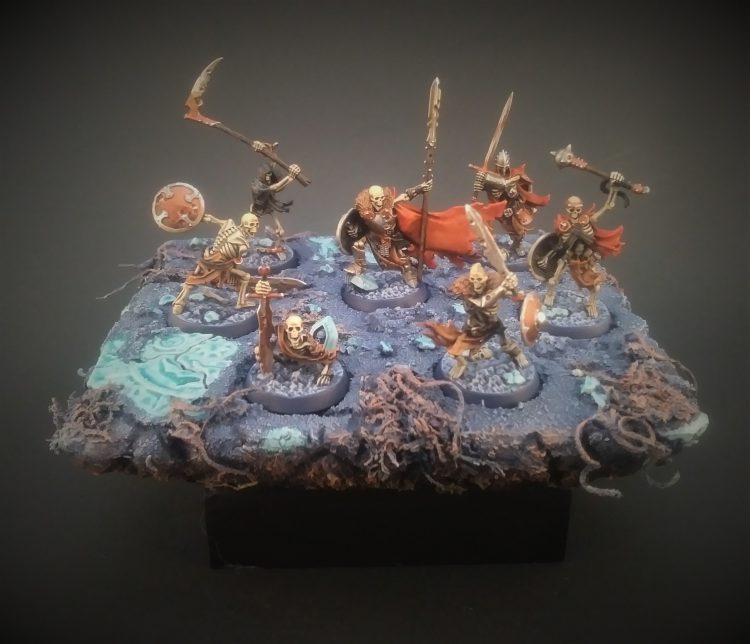
Faction: Death. That’s it, until Soulblight Gravelords updates them.
Price: 80 points
Source: Games Workshop website
What you get: Six different equipment profiles in seven models. Seriously, this warscroll is a mess. The Sepulchral Warden bears an Ancient Spear and Crypt Shield, the Prince of Dust carries an Ancient Mace and Crypt Shield, the Champion is armed with an Ancient Greatblade and Cryptshield, the Harvester wields and Ancient Scythe, two Petitioners bear Ancient Blades and Crypt Shield, and one final Petitioner left his shield at home.
What we’ll compare it to: 10 Skeleton Warriors with Ancient Blades for 80 points, from the 2018 Legions of Nagash Battletome. We expect skeletons to change in the upcoming Soulblight Gravelords battletome, and this page will be updated accordingly.
Rules: The Guard can re-roll charges, which is nifty, but only really matters if their output is decent. They lack a -1 to enemy bravery banner, as well as a minimum 6” charge Hornblower, but the innate re-roll to charges negates that drawback. Critically, though, the Sepulchral Guard is not Summonable, so cannot be healed or resurrected by Death heroes. This is a big deal; skeletons are fragile as all get out, and no way to bring them back negates Death’s core gimmick.
Output: It’s, uh. Not great. 10 skeletons do fractionally less damage, but you never have 10 skeletons attacking; you have 40 skeletons attacking. Death’s chaff units like Skeleton Warriors overwhelm the enemy with sheer weight of dice, and the Sepulchral Guard just don’t have the numbers.
Bottom line: Fragile, with low output and no way to bring them back, they don’t add anything to a Death army. Use the models in your 40-strong skeleton horde and bring glory to Nagash that way. Fail
The Chosen Axes
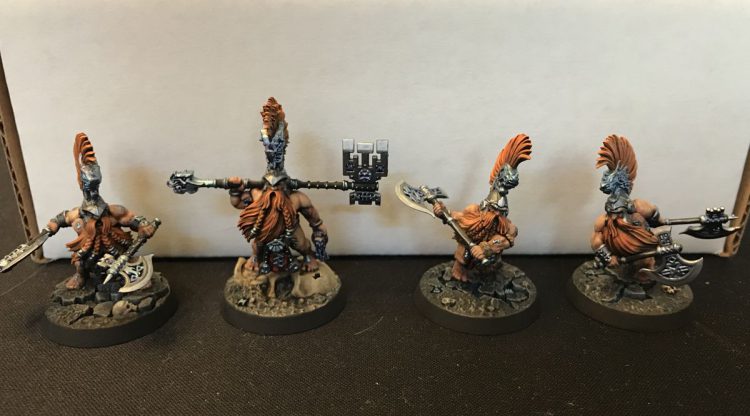
Faction: Vorstag Fyreslayers (Order). Vorstag are the speediest of the Fyreslayer holds, granting +1 to charge and making run rolls in the first battle round automatically 6”. This is useful for getting units in position, but you don’t really want your Runefather in combat; he’s there to buff your dudes.
Price: 200 points.
Source: Fyreslayers Battletome (2019)
What you get: Fjul-Grimnir, an Auric Runefather with Latchkey Grandaxe, and three Chosen Axes; Tefl Flamebearer and Mad Maegrim with a pair of Fyresteel Handaxes each, and Vol Orrukbane with a Fyresteel Great Axe.
What we’ll compare it to: Auric Runefather (100 points) and, oh God, 10 Vulkite Berserkers with a pair of Fyresteel Handaxes for 140 points. You can immediately see an issue; for 40 points more, the basic units get seven more models, and +1 to charge rolls from the hornblower. Given how similar the Chosen Axes are to Vulkite Berserkers, the Axes are just laughably overcosted.
Rules: Fjul-Grimnir gains a 5+ ignore damage when near the Chosen Axes (not passing the wound, simply ignoring it, which is neat), and gains a unique command ability to grant a friendly Vorstag unit wholly within 12” +1 to hit, which can combo quite nicely with the output the rest of the book has. He does lose the Fyresteel Throwing Axe the basic Runefather gets.
The Chosen Axes gain +1 to wound when within 3” of Fjul-Grimnir (which they should be, as this also grants the Runefather a 5+ ignore damage), gain the unique Fyresteel Great Axe for Vol Orrukbane (bizarrely with a worse to wound roll than the smaller weapons) and… nothing else. Same attack profile, same comparative abilities. They do lose their Fyresteel Throwing Axes, which does differentiate them somewhat, I guess…
Output: They’re pretty smacky, but most of this is from Fjul-Grimnir’s Latchkey Grandaxe. No matter how smacky they are though, they can’t compete with a full unit of Berserkers by themselves, let alone with an Auric Runefather as well. The Throwing axes are just a ‘nice to have’, but they’re still an additional attack!
Bottom line: You’re sacrificing 14 wounds and 25 attacks to gain Fjul-Grimnir’s unique command ability and saving only 40 points. There might be some combo in the book I’m missing, but I can’t see this ever being worthwhile. Fail
Spiteclaw’s Swarm
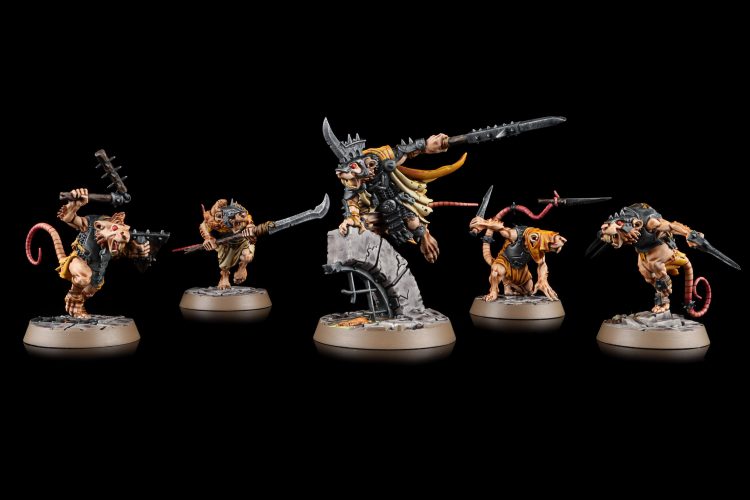
Credit: Pendulin
Faction: Clans Verminus Skaventide (Chaos). No subfaction rules here.
Price: 140 points
Source: Skaven Battletome (2019
What you get: Skritch Spiteclaw, a Clawlord with a Wicked Halberd, and four Clanrat equivalents: Krrk the Almost-trusted (great name) with a Rusty Spear, one rat with a Rusty Flail, one with STabbing Blades, and one with Punch Daggers. Again, not everyone has a name, which we feel is just rude.
What we’ll compare it to: A Clawlord (100 points) and, uh, I guess 20 Clanrats for 120 points?
Rules: Skirtch starts off at a disadvantage to his generic compatriot, losing Cornered Fury for the ability to return D3 slain rats to his Swarm with There are Always More (you can’t return Krrk). This seems neat, but then you remember the Swarm is four rats with a 6+ save; given their fragility, the Swarm is going to be either entirely fine, or completely destroyed. Other than that, both Clawlords share the same Gnash-gnaw on their Bones! command ability.
Krrk grants the Swarm immunity to battleshock, and hilariously gains two attacks if Skritch is slain. The Swarm’s Aversion to Death grants them a 5+ ignore wound roll once one model in the unit is slain in that phase. Annoyingly, despite having four different weapon profiles, all of them have identical to hit and to wound rolls, rend, and damage. Three of the four profiles even have the same range; this is just bad warscroll writing.
Output: This isn’t a unit you’re taking
Bottom line: Spiteclaw’s Swarm has some pretty funny rules, in line with a lot of the Skaven range, but it’s just so damn fragile. Given the Swarm’s fragility and lack of output, this warband can only fairly be compared with a generic Clawlord, who is a) cheaper and b) hits harder. Solid Fail.
The Farstriders
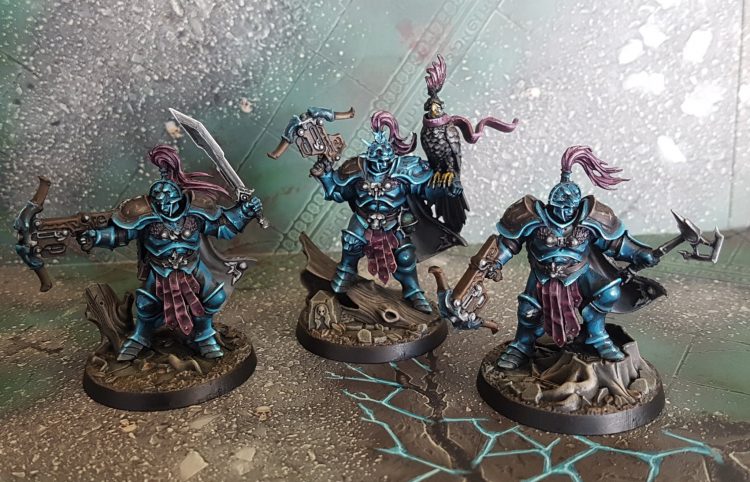
Faction: Hammers of Sigmar Stormcast (Order). Plus one Bravery is… fine, but you’re in such a small unit you won’t be taking battleshock tests, so this is only really useful for attacks that target Bravery.
Price: 100 points
Source: 2018 Stormcast Battletome
What you get: Three Vanguard-Hunters; Sanson Farstrider with Boltstorm Pistol, Shock Handaxe, Astral Compass and Star Falcon, Almeric Eagle-eye with Boltstorm Pistol andShock Handaxe, and Elias Swiftblade with Boltstorm Pistol and Storm Sabre.
What we’ll compare it to: Five Vanguard-Hunters for 110 points.
Rules: You can set this unit up wholly within 6” of a board edge more than 7” (not 9”!) from the enemy, you can run and shoot in the same turn, and the Star Falcon can do a mortal wound to an enemy unit within 18” on a 4+.
Output: Averaging about one damage per turn at range, and one more in melee, this is not a high output unit, but it is buffed by a mortal wound from Sanson’s birdie friend! Well, on some turns at least…
Bottom line: If five Vanguard-Hunters are 22 points each, you’re here paying 33 points per model for, uh, a mortal wound on a 4+. Seriously, otherwise their warscrolls are identical. Some warbands have neat gimmicks but there is literally nothing here. If you have 100 points spare in your list, look at endless spells and command points first, and these guys absolutely last. Fail
Magore’s Fiends
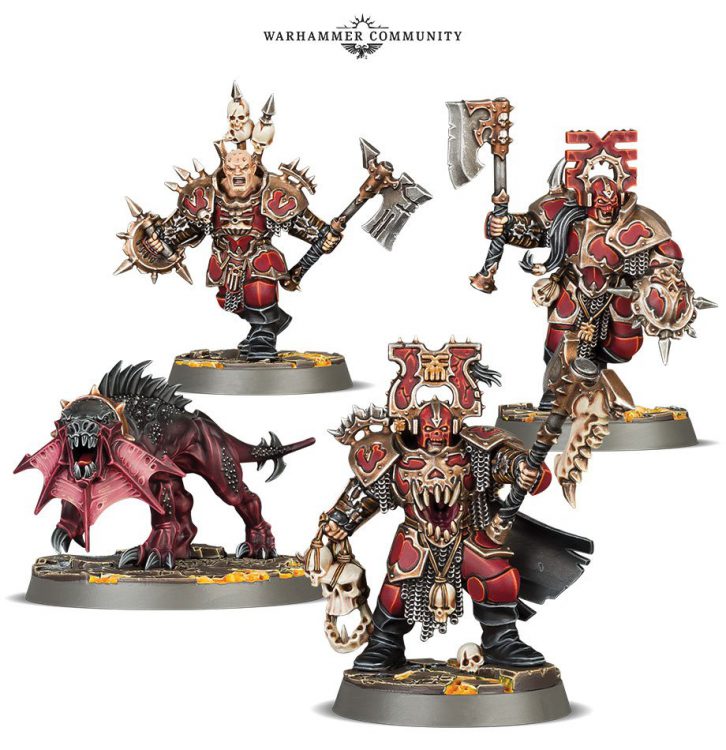
Faction: Goretide Blades of Khorne (Chaos). Re-rolling wound rolls of 1 is always a nice bonus, especially given their already decent output.
Price: 80 points for Magore’s Fiends, and 40 points for Riptooth; you have to take both units if you take one.
Source: 2019 Blades of Khorne Battletome
What you get: Three Blood Warriors and a Flesh Hound. Magore Redhand is armed with a Daemonic Axe and a freakin’ Belly Maw’, while Ghartok Flayskull and Sharkus the Bloodsighted carry a Goreaxe and Gorefist. Riptooth wields his Blood-dark claws, just as other Flesh Hounds do.
What we’ll compare it to: Five Blood Warriors for 100 points, and I guess one Flesh Hound for equivalently 20 points?
Rules: Magore’s Fiends share all of the rules of Blood Warriors, with the bonus of re-rolling charges while within 8” (naturally) of Riptooth. Sadly, Magore’s Belly maw does not inflict additional damage against tasty enemies. Riptooth has no additional rules; he’s literally just a named Flesh Hound. A bonus unbind from an extra Collar of Khorne is always useful though! Both units re-rolling charges when next to each other (and Riptooth at all times) is super useful, and might just be what you need to shoot through a long-bomb charge and take out a squishy wizard hiding at the back.
As an added bonus, these little Blades of Khorne units are useful little Blood Tithe generators. They kill stuff? Great! They die fast and easy? Great, more summoning power for you. These guys are great because they’re two units, meaning twice the fodder for Blood Sacrifice and other ways to gain Blood Tithe points.
Output: Magore’s Fiends put out noticeably more damage than five Blood Warriors, largely thanks to the goodest blood-doggo giving them the edge. Despite no mortal wounds from either unit, and not fantastic rend, they should still be able to bully units without great armour saves.
Bottom line: Very solid Pass. Re-rolling charges is an incredibly useful rule, and who doesn’t want an excuse to bring in another pet to their army?
Enter the Thunderdome!
Because I felt like it’ I’m going to keep a running track of pass/fail results for all Grand Alliances. Right now it’s a bit useless, but as we progress through the seasons we’ll be able to see, through our objective and infallible review system, which Grand Alliance has the best warbands in the game.
| Faction | Pass | Fail | Pass rate |
| Order | 0 | 3 | 0% |
| Chaos | 2 | 1 | 67% |
| Death | 0 | 1 | 0% |
| Destruction | 1 | 0 | 100% |
| Total pass rate | 38% | ||
Alright, so a 38% pass rate isn’t fantastic, but look how well Chaos and Destruction are doing! You go, little buddies!
Next Time: Nightvault
That wraps up our look at the season 1 warbands but join us next time – in a week or two – when we’ll evaluate the warbands of Season 2 – Nightvault – and update our Thunderdome tallies. As always if you have any questions or feedback drop us a note in the comments below or email us at contact@goonhammer.com.

